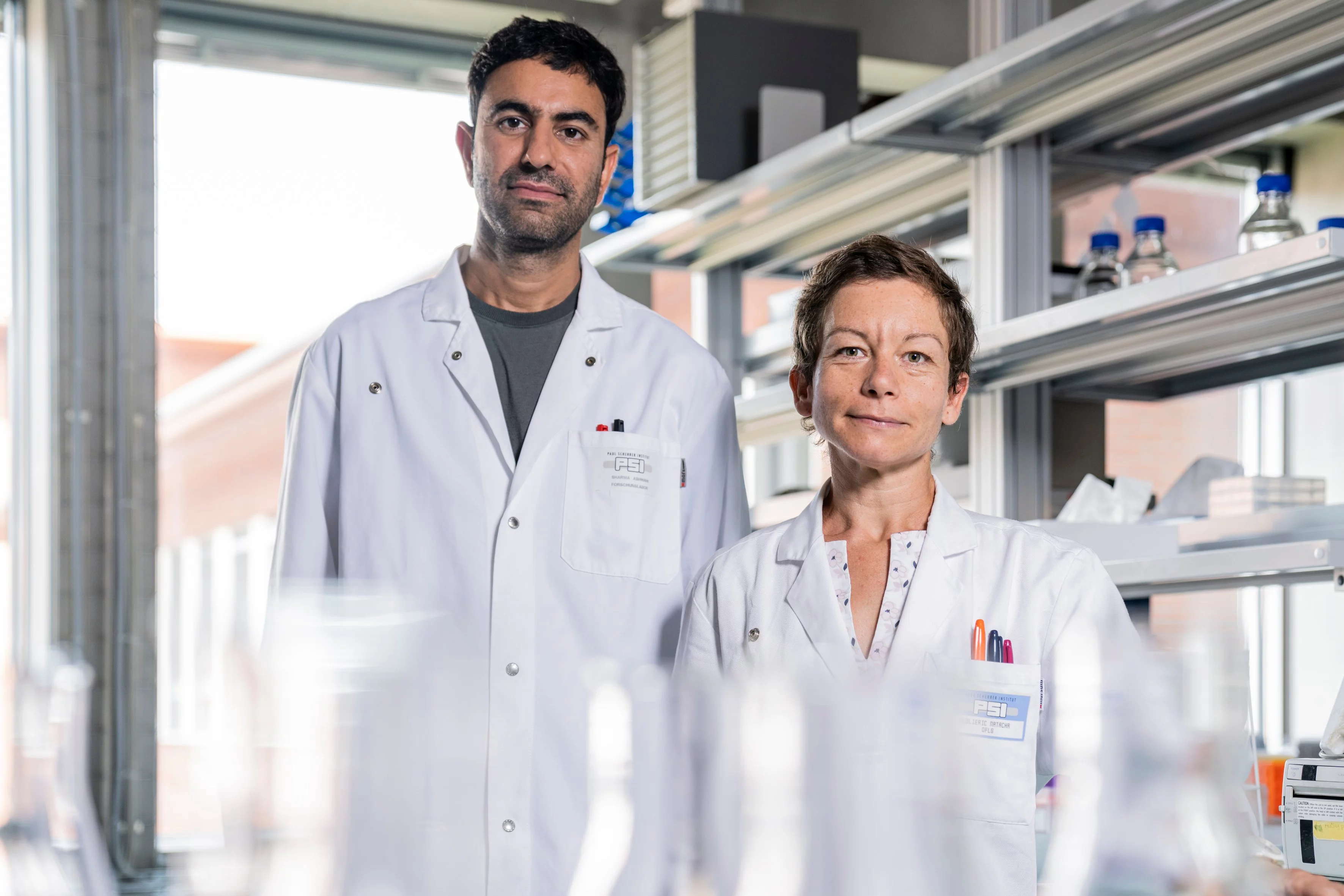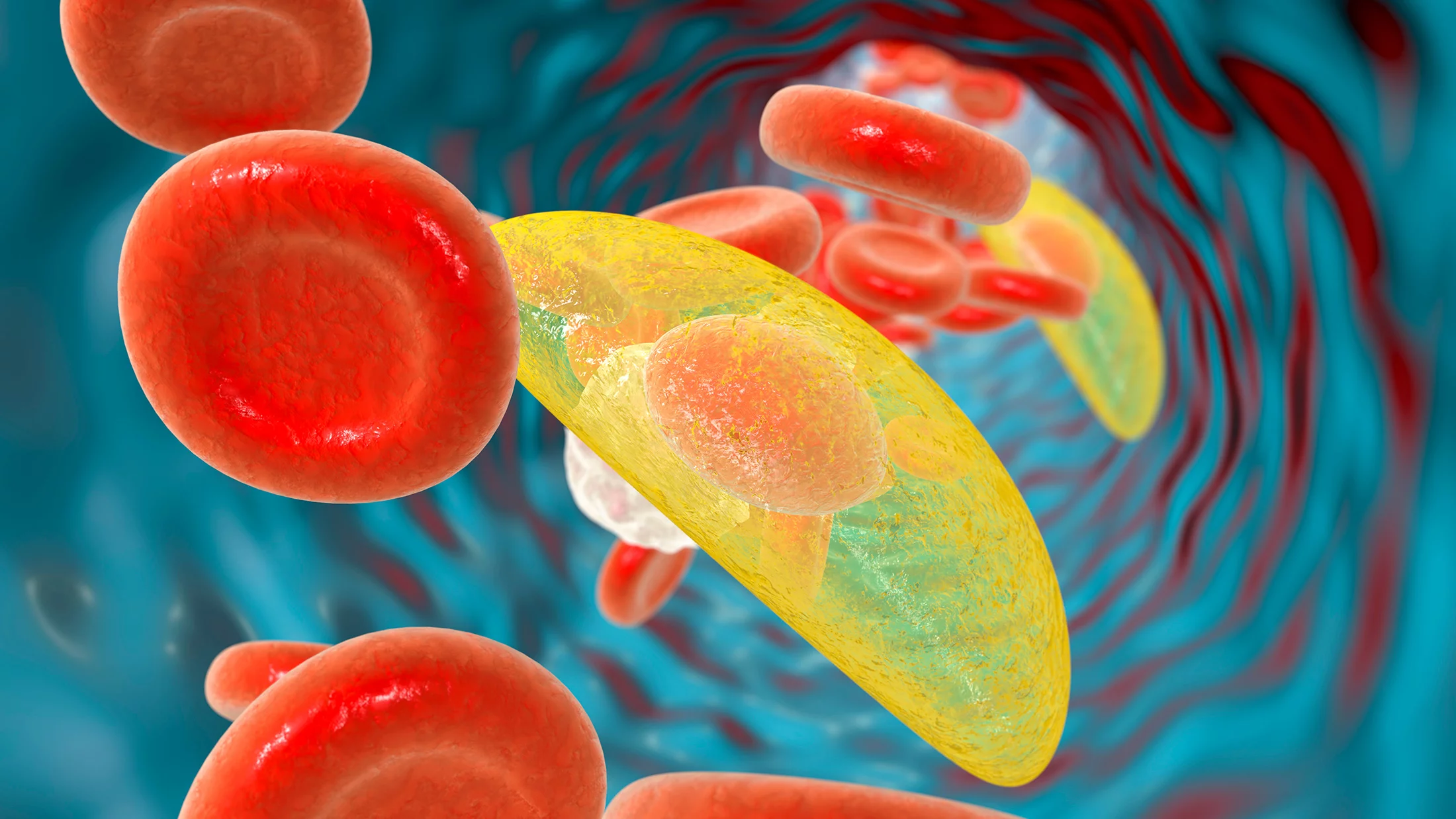Researchers at the Paul Scherrer Institute PSI have identified a chemical compound that may be suitable as an active agent against several different unicellular parasites. Among these are the pathogens that cause malaria and toxoplasmosis. The point of attack for this promising substance is the protein tubulin: It helps cells divide and therefore is essential for the multiplication of the parasites. The study appears today in the journal EMBO Molecular Medicine.
The idea behind this approach comes from tumour research: Blocking the protein tubulin in cancer cells prevents the cells from dividing successfully – and thus also from multiplying. Physicians have long been applying this principle successfully in chemotherapy and administering tubulin-inhibiting substances to patients.
PSI researchers Natacha Gaillard and Ashwani Sharma from the Laboratory of Biomolecular Research have now extended this concept to unicellular parasites, including the pathogens that cause malaria (Plasmodium sp.) and toxoplasmosis (Toxoplasma gondii). Their cells, too, need tubulin for cell division. "If this protein no longer works the way it is supposed to, it hits the parasite hard," says researcher Ashwani Sharma. "That makes tubulin a good point of attack for drugs. The protein has been known for a long time in tumour research, but until now it hasn't gotten much attention in parasitology."
The pathogens that cause malaria and toxoplasmosis are counted among the apicomplexa, a group of single-celled eukaryotic parasites. Their cells possess a true cell nucleus, and they go through both sexual and asexual phases of reproduction. Apicomplexa use humans or animals as hosts or intermediate hosts. Every year, many millions of people are afflicted by the infectious diseases they cause.
Searching for points of attack
All eukaryotes, from amoebae to humans, produce the protein tubulin. In the form of long filaments, it spans the cells as a kind of scaffolding. From this, a so-called spindle apparatus forms during cell division that pulls the chromosomes apart and distributes them to two daughter cells.
From one organism to another, the protein differs in just a few places, but these differences can potentially be important. For scientists to find active agents against the protein specific to eukaryotic unicellular parasites and thus block it, the precise structure of the protein must be known.
So PSI researchers isolated tubulin from cells of the ciliate Tetrahymena thermophila. "Its protein is virtually identical to that in apicomplexa," explains scientist Natacha Gaillard. "And that saves us from having to work with malaria pathogens in the laboratory."
Using the Swiss Light Source SLS and electron microscopy, the researchers deciphered the molecular structure of the protein. They then searched for a chemical compound capable of inhibiting the protein. A substance data bank yielded five candidates as potential active agents – in the laboratory, one chemical compound proved effective. The researchers named it parabulin. "It prevents tubulin from forming long, stable protein filaments. Thus it also blocks successful cell division," Gaillard says. Parabulin blocks the protein exactly at the place analogous to where cancer drugs dock in human tubulin.
Hope for future medicine
PSI's cooperation partners at the University of California in Irvine, USA, tested the compound on Toxoplasma gondii in human cells. And in fact, the parasite was practically incapable of reproducing any more. In contrast, parabulin had virtually no effect on human cells. "That is a good sign: The substance apparently acts only on the tubulin of the parasite – a basic requirement to be able to use it as a drug against infectious diseases," Sharma explains.
The assumption is that parabulin works not only against Toxoplasma gondii, but also against all representatives of the apicomplexa, including the malaria pathogen. PSI has now filed a patent and plans to continue testing parabulin in the laboratory, with the aim of later developing it into a drug with the help of the pharmaceutical industry.
The study appears today in the journal EMBO Molecular Medicine.
Contact
Original publication
-
Gaillard N, Sharma A, Abbaali I, Liu T, Shilliday F, Cook AD, et al.
Inhibiting parasite proliferation using a rationally designed anti-tubulin agent
EMBO Molecular Medicine. 2021; 13(11): e13818 (12 pp.). https://doi.org/10.15252/emmm.202013818
DORA PSI
About PSI
The Paul Scherrer Institute PSI develops, builds and operates large, complex research facilities and makes them available to the national and international research community. The institute's own key research priorities are in the fields of future technologies, energy and climate, health innovation and fundamentals of nature. PSI is committed to the training of future generations. Therefore about one quarter of our staff are post-docs, post-graduates or apprentices. Altogether PSI employs 2300 people, thus being the largest research institute in Switzerland. The annual budget amounts to approximately CHF 450 million. PSI is part of the ETH Domain, with the other members being the two Swiss Federal Institutes of Technology, ETH Zurich and EPFL Lausanne, as well as Eawag (Swiss Federal Institute of Aquatic Science and Technology), Empa (Swiss Federal Laboratories for Materials Science and Technology) and WSL (Swiss Federal Institute for Forest, Snow and Landscape Research). (Last updated in June 2025)


